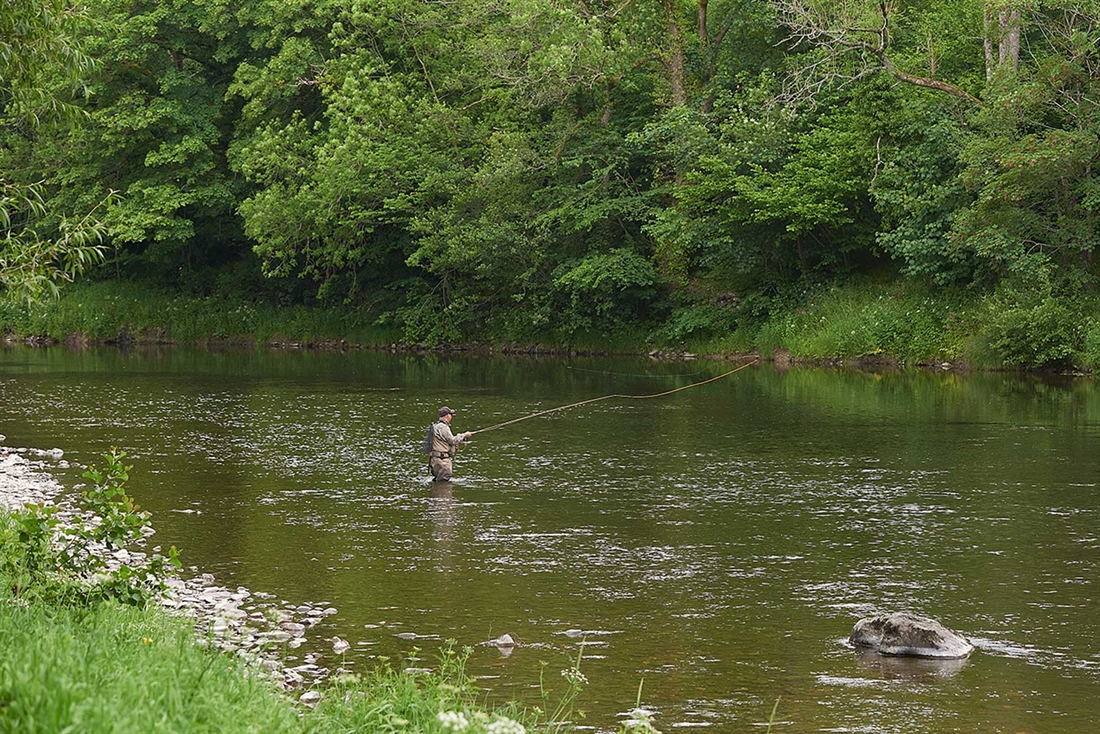How a weight-forward fly-line works
Understand the basics of taper, weight, belly and length - and how they can improve your trout fishing

Weight-forward trout lines have long since replaced double-taper lines as standard for river trout fishing, and every season they become more sophisticated as materials, tapers and coatings are refined. But how many of us understand exactly how they work?
Anatomy of a weight-forward line
1. Level tip
6in-12in
A short sacrificial section at the front of the line. It prevents you cutting into and affecting the taper when attaching leaders.
2. Front taper
6ft-30ft
A section of reducing diameter that dissipates energy as the line unfurls, providing a gentle presentation. The front taper probably has the most influence on the line’s performance. Long front tapers have less mass and will gently deliver small light flies, while short front tapers have a more powerful delivery for heavy or wind-resistant flies. The weight of the fly-line still matters, though. Light lines will struggle to turn over very big or wind-resistant flies even with short front tapers. If you are routinely casting such flies, consider using a five- or six-weight line to make casting easier. Front taper and tip diameter are not the same. It is possible to have a long, gradual taper to a thick tip, or a short taper to a thin tip; the former will deliver the fly powerfully, and the latter more delicately. The greater the tip diameter the more energy is transmitted to the leader
3. Belly
0FT-31.5ft
The thickest, heaviest section of the line usually without any taper, it carries much of the cast’s energy and combined with the rear taper determines how much line can be handled outside of the rod tip both in the air and on the water.
4. Rear taper
2ft-40ft
A section of reducing diameter joining the belly to the running line. Long rear tapers give good loop stability during distance casting; short rear tapers make it easy to determine the optimum load point for casting the full head. Long rear tapers make it easier to match the line to the rod because the length of line in use can be easily varied; short rear tapers lack this versatility – once the head is outside of the rod tip there is little that can be done to increase the load as the running line has so little mass.
5. Running line
The remainder of the fly-line after the head (total fly-line length is usually about 90ft). This low-diameter level section allows easy shooting for distance. Short heads with short rear tapers have poor energy transfer from the thin running line to the thicker head. This can make it difficult to mend line with the head outside the rod tip. Longer heads and long back tapers make mending easier.
Total head
23ft-70ft
The combined length of tip, front taper, belly and rear taper. Long casts are easiest when using the maximum length of head you can hold in the air with good form. Long heads are good for distance casting because the loop will take longer to unfurl and as a result the line will shoot further. Short heads can be very efficient for an easy pick-up and a long shoot with one false cast. Most heads are longer than the length of the average river cast. Don’t forget the length of the leader: an 18ft leader on a short cast of 30ft gives only 12ft of line outside the rod tip – a line with a fine tip and long front taper will have insufficient line mass outside the rod tip to load the rod well.
Three types of weight-forward line
■ Traditional weight-forward (WF) lines have medium length bellies with front and rear tapers of 6ft-10ft. Much of their weight is evenly distributed. They tend to be versatile while not excelling in any one area.
■ Forward-loaded WF lines have short bellies, a short front taper and often a long rear taper. Most of their weight is at the front of the line. They turn over large or heavy flies well but may compromise presentation with short leaders. At close range they load fast rods well but may overload slower rods. They cast long leaders and thick-butt leaders well. They’re good for loading fast-action rods and casting in strong winds.
■ Rear-loaded WF lines have a continuous taper with the heaviest section at the rear or a long front taper with a short heavier belly; they tend to have short back tapers. At short range, slow rods will handle the lack of tip mass well, but faster rods will feel underloaded. They roll-cast well with the heavy rear always turning over the lighter front to offer delicate presentation. Long leaders may be hard to cast until enough line is aerialised. Leaders with thick butts may cause an open casting loop with rear-loaded lines. Rear-loaded lines are good for medium-long casts, delicate presentation with short leaders, and loading soft-action rods. They’re poor at turning over heavy or wind-resistant flies, and casting into wind.
What is AFTMA? The American Fishing Tackle Manufacturers Association system matches lines to rods and measures the first 30ft of line minus the short level tip. Some lines adhere to this standard, but many do not. It seems logical that a four-weight rod should be able to cast the full head of a four-weight fly-line but this is often not the case. Few WF4F lines have a 30ft head, many are significantly longer, and so while the first 30ft may indeed be AFTMA 4, the total head weight can be much greater.
| Weight forward versus double taper |
|---|
|
Advantages: Weight-forward (WF) profiles take up less space on the reel than double tapers, shoot better for greater distance and allow the line designer the freedom to create a wide range of line types. Disadvantages: WF lines increase the chance of a rod-and-line mismatch because whereas double tapers allowed line to be fed out until the rod loaded well, WF lines do not allow the same degree of adjustment. Also, a WF line that is too heavy casts well at short range but overloads the rod when casting the whole head. If the line is too light for the rod, feeding out more line is not effective because the heavy head cannot be supported by the thin running line. |






